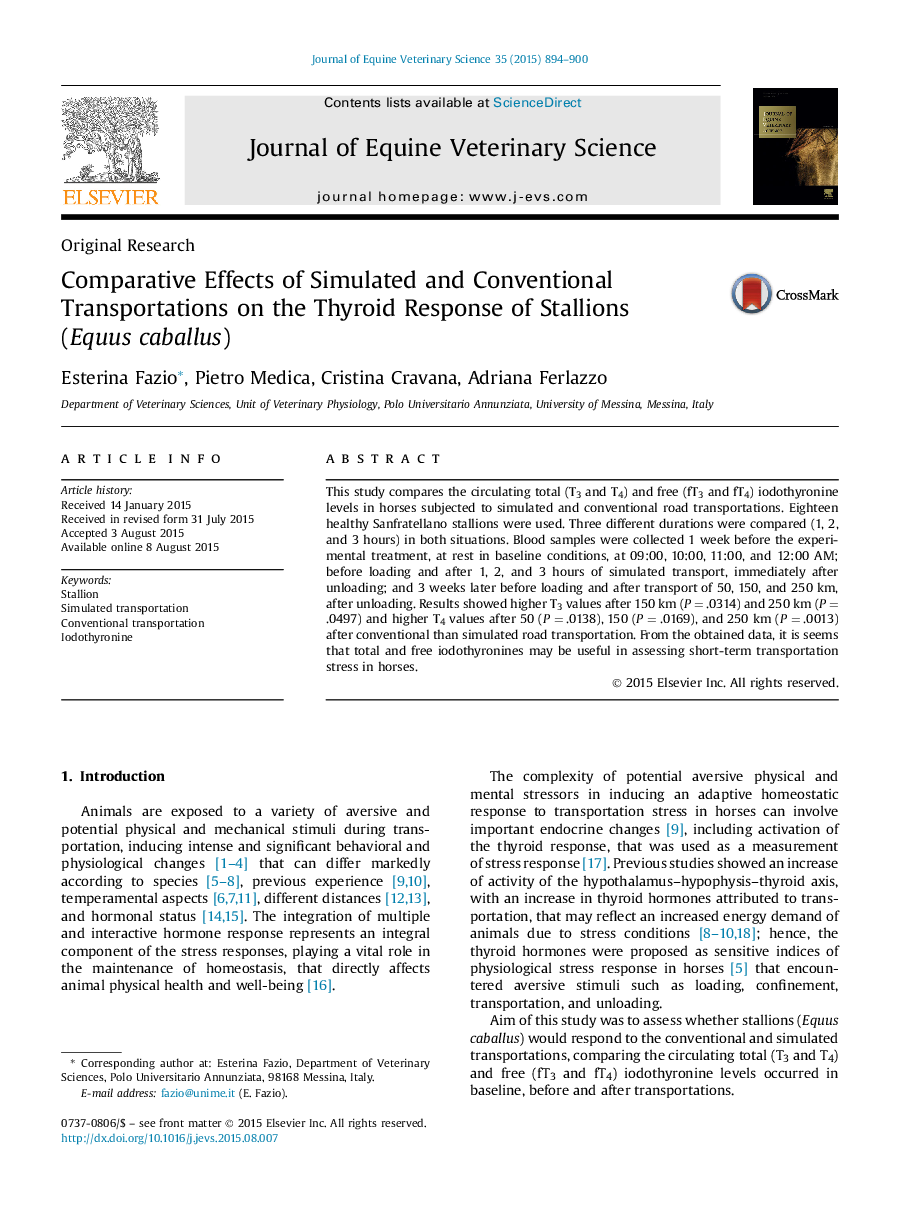| Article ID | Journal | Published Year | Pages | File Type |
|---|---|---|---|---|
| 2394739 | Journal of Equine Veterinary Science | 2015 | 7 Pages |
•Thyroid response in stallions submitted to different transportations was evaluated.•The highest T3 levels after 150 and 250 km conventional transportation were obtained.•The highest T4 levels after 50 to 250 km conventional transportation were obtained.•The thyroid horses' response was a suitable evaluation of short-term transportations.•Iodothyronines synergically act to improve both transportations adaptation.
This study compares the circulating total (T3 and T4) and free (fT3 and fT4) iodothyronine levels in horses subjected to simulated and conventional road transportations. Eighteen healthy Sanfratellano stallions were used. Three different durations were compared (1, 2, and 3 hours) in both situations. Blood samples were collected 1 week before the experimental treatment, at rest in baseline conditions, at 09:00, 10:00, 11:00, and 12:00 AM; before loading and after 1, 2, and 3 hours of simulated transport, immediately after unloading; and 3 weeks later before loading and after transport of 50, 150, and 250 km, after unloading. Results showed higher T3 values after 150 km (P = .0314) and 250 km (P = .0497) and higher T4 values after 50 (P = .0138), 150 (P = .0169), and 250 km (P = .0013) after conventional than simulated road transportation. From the obtained data, it is seems that total and free iodothyronines may be useful in assessing short-term transportation stress in horses.
